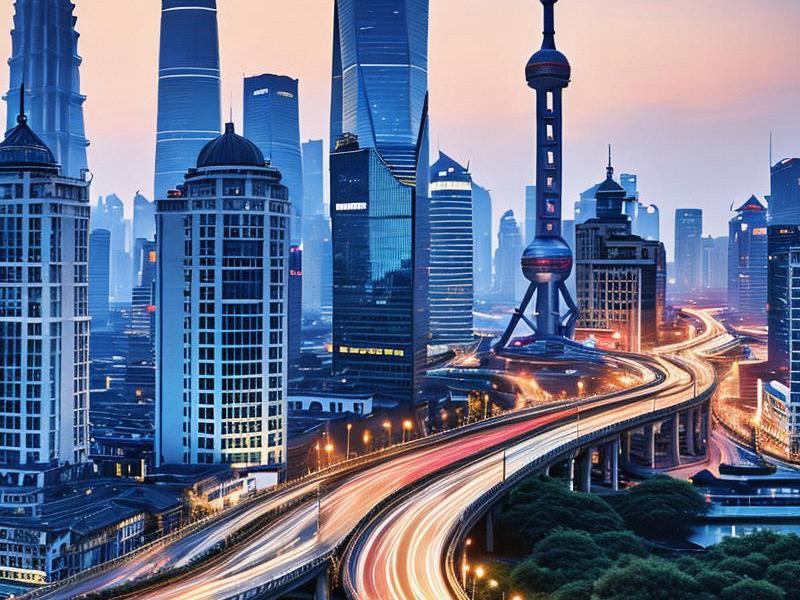This article delves into the vibrant city of Shanghai and its surrounding regions, exploring their unique blend of urban development, cultural heritage, and economic growth. Shanghai, as the largest city in China, is not only a global financial hub but also a melting pot of cultures and traditions. Its surroundings, including the neighboring provinces and cities, contribute significantly to its identity and prosperity.

Shanghai, often referred to as the "Pearl of the Orient," stands as a testament to China's rapid modernization and economic transformation. Located on the eastern coast of China, at the mouth of the Yangtze River, Shanghai is a bustling metropolis that seamlessly blends the old with the new. The city's skyline, dominated by iconic structures like the Oriental Pearl Tower and the Shanghai Tower, is a symbol of its status as a global financial center.
The history of Shanghai dates back to the 11th century when it was a small fishing village. However, its transformation began in the 19th century with the opening of treaty ports after the First Opium War. This period saw the influx of foreign influences, leading to the development of the International Settlement and the French Concession. These areas, with their colonial architecture, still stand as a reminder of Shanghai's rich history.
Today, Shanghai is a city of contrasts. The Bund, a waterfront area along the Huangpu River, showcases a stunning array of historic buildings juxtaposed against the modern skyscrapers of Pudong. Pudong, once a rural area, has been transformed into a futuristic district housing the Shanghai Stock Exchange, the Jin Mao Tower, and the aforementioned Shanghai Tower.
The cultural heritage of Shanghai is deeply rooted in its history. The city is known for its unique blend of traditional Chinese culture and Western influences. The Shikumen (stone gate) houses, a type of residential building that combines Chinese and Western architectural styles, are a testament to this fusion. These houses, found primarily in the former French Concession, have been preserved and now house art galleries, cafes, and boutique shops.
上海贵族宝贝自荐419 Shanghai's culinary scene is another aspect that reflects its cultural diversity. The city is famous for its "Shanghainese cuisine," which is characterized by its sweet and savory flavors. Dishes like Xiaolongbao (soup dumplings) and Shengjianbao (pan-fried dumplings) are must-tries for food enthusiasts. Additionally, the city's night markets and bustling street food vendors offer a taste of the local flavors.
Beyond Shanghai, the surrounding regions play a crucial role in the city's identity and development. The Yangtze River Delta, one of the most economically active regions in China, includes the provinces of Jiangsu and Zhejiang, as well as the city of Suzhou. This region is known for its advanced manufacturing, high-tech industries, and rich cultural heritage.
Suzhou, often referred to as the "Venice of the East," is renowned for its classical gardens, which are UNESCO World Heritage Sites. These gardens, with their intricate designs and serene landscapes, reflect the harmony between nature and human creativity. The city is also famous for its silk production, which has been a staple of its economy for centuries.
Nanjing, the capital of Jiangsu province, is another significant city in the region. Known as the "Southern Capital" during the Ming dynasty, Nanjing is steeped in history and culture. The city is home to the Sun Yat-sen Mausoleum, the Confucius Temple, and the Ming Xiaoling Mausoleum, among other historical landmarks. Nanjing's role in China's history, particularly during the Republic of China era, adds to its cultural significance.
上海花千坊爱上海
The economic growth of Shanghai and its surroundings is a story of innovation and resilience. The city has established itself as a global leader in finance, trade, and technology. The Shanghai Free-Trade Zone, established in 2013, has attracted numerous multinational corporations and foreign investors. The city's advanced infrastructure, including its international airports, high-speed rail network, and efficient public transportation system, further enhances its appeal as a business hub.
The surrounding provinces and cities contribute to Shanghai's economic prosperity through their industries and resources. Jiangsu and Zhejiang are known for their manufacturing capabilities, particularly in electronics, machinery, and textiles. These provinces also have a strong presence in the service sector, including finance, logistics, and information technology.
The integration of Shanghai with its surroundings is facilitated by the development of regional transportation networks. The Shanghai-Nanjing Intercity High-Speed Railway, for example, connects the two cities in just over an hour, promoting economic and cultural exchanges. Similarly, the Suzhou-Jiaxing-Hangzhou Metropolitan Area, often referred to as the "Greater Yangtze River Delta," is a cluster of cities that are closely linked through transportation and economic cooperation.
爱上海同城对对碰交友论坛 Environmental sustainability is a growing concern in Shanghai and its surroundings. The city has implemented various initiatives to reduce pollution and promote green development. The construction of the Shanghai World Expo Park, which hosted the 2010 World Expo, showcased the city's commitment to sustainability. The park now serves as a venue for cultural events, exhibitions, and recreational activities.
The surrounding regions are also focusing on environmental conservation. The Suzhou Wetland Park, for instance, is a protected area that preserves the region's biodiversity. Efforts are being made to restore and protect the wetlands, which are crucial for maintaining ecological balance.
In conclusion, Shanghai and its surroundings are a dynamic and interconnected region that exemplifies China's rapid development and cultural richness. The city's blend of modernity and tradition, combined with the contributions of its neighboring provinces and cities, makes it a unique and fascinating place to explore. Whether it's the historic architecture of the Bund, the serene gardens of Suzhou, or the economic prowess of the Yangtze River Delta, Shanghai and its surroundings offer a wealth of experiences for residents and visitors alike.
As Shanghai continues to grow and evolve, it remains a beacon of innovation and progress, while preserving its rich cultural heritage. The surrounding regions, with their unique characteristics and contributions, add to the vibrant tapestry of this remarkable area. Together, they form a region that is not only economically significant but also culturally and environmentally diverse.